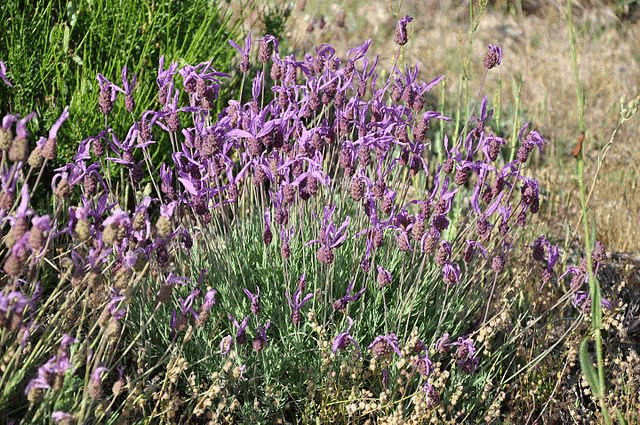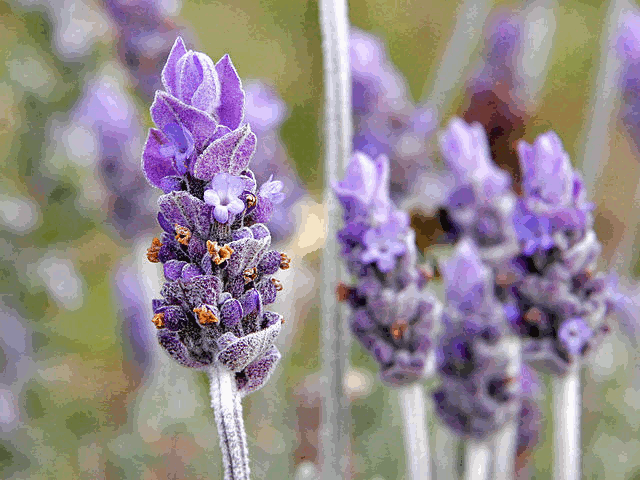Lavander
Scientific Name: Lavandula angustifolia
Climate: Warm and temperate
Plant Description: Lavender is a shrub that grows up to one meter in height. It has a very branched and grayish stem. The stem is woody, perennial, aromatic. The leaves are small and very aromatic. They grow opposite on the stem, with an ash green color. The flowers, used for their substances, grow in terminal spikes. Flowering occurs in summer. The flowers are small, blue-violet in color.
Cultivation: It can be reproduced from seed, but it is easier to do so by taking cuttings from its stems. It reproduces from cuttings taken from the tips of the branches or from the leaf nodes, cutting them in spring or autumn. Since the stem has a woody bark, it is necessary to peel it up to five centimeters after the point of cutting. The peeled part is planted with fertilized soil, compressing the soil around the cutting, watering only when it dries. The cutting may take four to six weeks to take root. When there is resistance by pulling the top a little, the roots have already developed and they can be transplanted to a permanent place at a distance of one meter between plants.
It needs to be planted in direct sunlight. Lavender requires little water, the roots of this plant do not tolerate soaking or flooding in any season, but especially in winter (a time when excess water in the roots can freeze them and kill the plant). They prefer sandy and loose soils that facilitate good drainage.
To harvest, the stems must be cut to the base when half of the flowers are open. The leaves can be used at any time, but they are not as valued as flowers. Essential oils are extracted from fresh flowers, but the stems should be bunched and dried upside down in a dark, dry place. Once dried, the flowers can be stored in a jar for use throughout the year. This plant grows slowly, but the flowering becomes more abundant after the second year of cultivation.
 Uses: The leaves and flowers of lavender, whether fresh or dried, are edible and taste slightly sweet but somewhat bitter at the end. They can flavor various juices and also desserts or be added to sauces. It is an ideal plant to have in the garden because it attracts many pollinators.
Uses: The leaves and flowers of lavender, whether fresh or dried, are edible and taste slightly sweet but somewhat bitter at the end. They can flavor various juices and also desserts or be added to sauces. It is an ideal plant to have in the garden because it attracts many pollinators.
This flower helps for both physical and emotional problems; Due to its special aroma, it is used in aromatherapy, colognes and perfumes. The essential oil that is extracted from it is used for muscle pain and migraines, burns, wounds, allergies, and skin care.
It is used as an tea for migraines due to nervous exhaustion, taking a cup of the boiled flowers three times a day and, if you take a cup before bed, it can help to alleviate insomnia. It is also suitable as a digestive after eating. In tincture, up to five milliliters or a teaspoon a day can be taken for migraines, depression or nervous tension, although it also serves to calm asthma, especially in attacks triggered by nervous tension, and for stress.
It is also well known as a natural disinfectant, very effective in treating acne problems, healing and disinfecting wounds and being a good palliative for rheumatic diseases.
Pests and diseases: This plant is resistant to insects, but it is vulnerable to fungi if the soil is not well drained.
References:
https://www.gardeningknowhow.com/edible/herbs/lavender/rooting-lavender-cuttings.htm
En español: Lavanda

